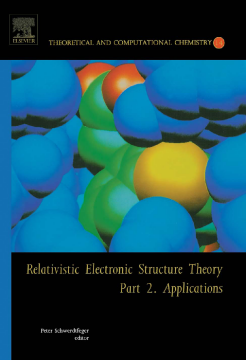
Additional Information
Book Details
Abstract
The field of relativistic electronic structure theory is generally not part of theoretical chemistry education, and is therefore not covered in most quantum chemistry textbooks. This is due to the fact that only in the last two decades have we learned about the importance of relativistic effects in the chemistry of heavy and superheavy elements. Developments in computer hardware together with sophisticated computer algorithms make it now possible to perform four-component relativistic calculations for larger molecules. Two-component and scalar all-electron relativistic schemes are also becoming part of standard ab-initio and density functional program packages for molecules and the solid state. The second volume of this two-part book series is therefore devoted to applications in this area of quantum chemistry and physics of atoms, molecules and the solid state. Part 1 was devoted to fundamental aspects of relativistic electronic structure theory whereas Part 2 covers more of the applications side. This volume opens with a section on the Chemistry of the Superheavy Elements and contains chapters dealing with Accurate Relativistic Fock-Space Calculations for Many-Electron Atoms, Accurate Relativistic Calculations Including QED, Parity-Violation Effects in Molecules, Accurate Determination of Electric Field Gradients for Heavy Atoms and Molecules, Two-Component Relativistic Effective Core Potential Calculations for Molecules, Relativistic Ab-Initio Model Potential Calculations for Molecules and Embedded Clusters, Relativistic Pseudopotential Calculations for Electronic Excited States, Relativistic Effects on NMR Chemical Shifts, Relativistic Density Functional Calculations on Small Molecules, Quantum Chemistry with the Douglas-Kroll-Hess Approach to Relativistic Density Functional Theory, and Relativistic Solid State Calculations.
- Comprehensive publication which focuses on new developments in relativistic quantum electronic structure theory
- Many leaders from the field of theoretical chemistry have contributed to the TCC series
- Will no doubt become a standard text for scientists in this field.
"Together, these two volumes give both deep and broad coverage of the field of relativistic electronic structure theory."
Russell M. Pitzer. The Ohio State University, Ohio, Ohio, USA, JOURNAL OF THE AMERICAN CHEMICAL SOCIETY, Vol. 126, 2004
